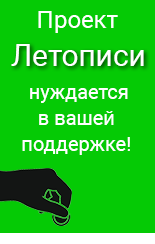Наука карт
Наука карт - map science
Возможность создания карт, отображающих сетевые отношения компонентов сложных систем, имела столь важное значение, что наука о сетях иногда называлась наукой карт.
Разные карты для разных групп пользователей: Then there are six iterations which address the needs of specific user groups such as economic decision-makers, science policy makers, scholars (in 2010), maps as visual interfaces to digital libraries, science maps for children, and also science forecasts for the general public.
См. Сетевая наука и STEM
- Börner K. [и др.]. Teaching children the structure of science International Society for Optics and Photonics, 2009. 724307–724307 с
- K. Börner, “Making sense of mankind’s scholarly knowledge and expertise: collecting, interlinking, and organizing what we know and different approaches to mapping (network) science,” Environment and Planning B: Planning and Design, vol. 34, no. 5, pp. 808–825, 2007.
История научных карт
Cartographic maps of physical places have guided humanity’s explorations for centuries. They enabled the discovery of new worlds while marking territories inhabited by unknown monsters. Without maps, we would be lost. Domain maps of abstract semantic spaces aim to serve today’s explorers navigating the world of science.
Science maps are also known as scientographs, literature maps, domain maps, or knowledge domain visualizations.
In 1939, John D. Bernal a physicist, historian of science, and sociologist of science designed one of the first ‘maps of science (Bernal, 1939). The map divides science into a physical, a biological, and a sociological sector and distinguishes fundamental and technical research. Since the 1930s, more than one hundred milestone maps of science have been published in peer-reviewed journals and books.
Science is performed by people and scholarly and social networks among people have a major impact on the structure and growth of science. Consequently, the study of scholarly networks or ‘invisible colleges’ (Crane, 1972) is a major research topic in scientometrics. Depictions of social networks, so called sociograms were invented by social scientist Jacob L. Moreno in 1934 (Moreno, 1934). Shortly after, many other social scientists and other scholars start mapping social and other networks.
Depictions of social networks, so called sociograms were invented by social scientist Jacob L. Moreno in 1934 (Moreno, 1934). Shortly after, many other social scientists and other scholars start mapping social and other networks.
- Moreno J.L. Who Shall Survive?: A New Approach to the Problem of Human Interrelations / J.L. Moreno, Nervous and Mental Disease Publishing Company, 1934. 440 c.
Early maps were done by hand – no citation index database existed and computers were not yet available. Recent a dvances in computer technology and software development have made possible the algorithmic creation of data maps from large-scale datasets.
Научные карты для детей
While there are many attempts to make science maps easier to read for science policy makers, business professionals or researchers, we are not aware of any other attempts to design science maps for children.
A useful tool for visualizing large data sets is the network diagram. In the K-12 setting, they are commonly known as concept maps. Concept maps are widely used in education. In first grade, they might communicate the daily schedule. Later, mind maps and argument maps are valuable means to communicate complex systems. Software tools such as Inspiration (Inspiration Software Inc., 2008), Compendium (Compendium Institute, 2008), Let’s Focus (L'Università della Svizzera Italiana, 2008) or Rationale (Austhink Software Pty Ltd., 2008) help visualize (collective) knowledge creation, access, sharing, discussion, and utilization. The maps augment and enhance human intellectual output ultimately leading to improved decision making.
- Turchi P. Maps of the Imagination / P. Turchi, San Antonio, Tex.: Trinity University Press, 2004. 245 c.
